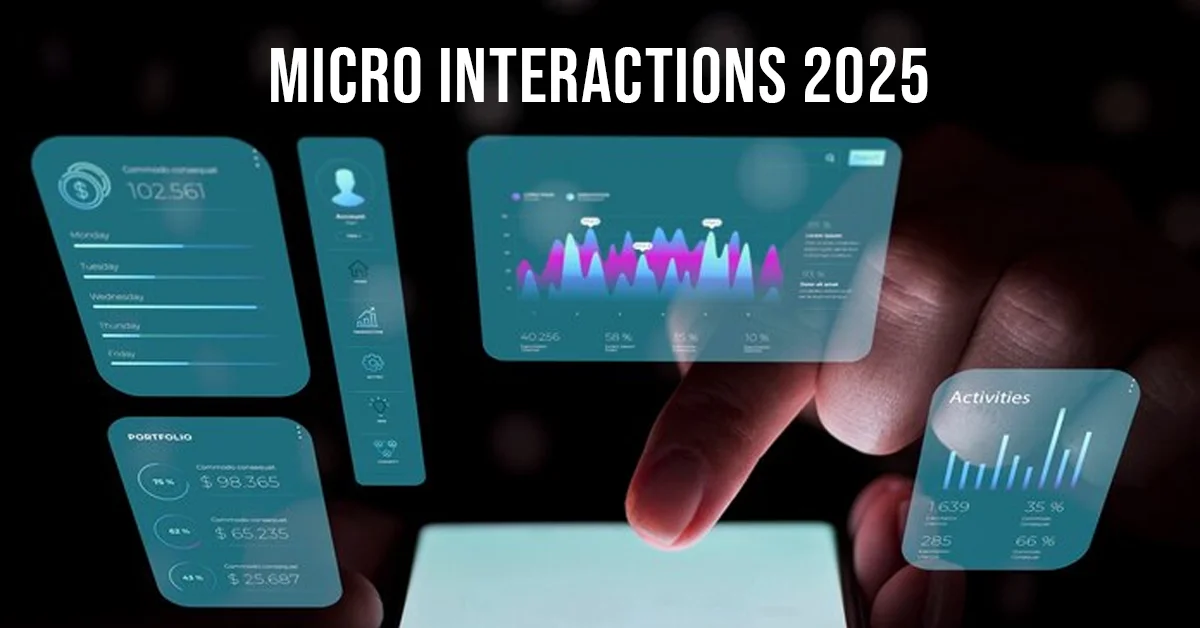In the fast-evolving world of digital design, micro interactions have emerged as a pivotal element for enhancing user engagement. As we look toward 2025, the significance of these small yet powerful design features will only increase. This article explores the concept of micro interactions, their benefits, and how to implement them effectively to create engaging user experiences.
ALSO READ: Unravel The Stories Of The Past At The Museo Ebraico di Torino
What Are Micro Interactions?
Micro interactions are subtle design elements that facilitate user interaction with a product or service. They often include animations, visual cues, and feedback mechanisms that guide users in performing tasks. For example, a simple animation when a button is clicked or a notification that confirms a user’s action can make the experience more engaging.
Key Components of Micro Interactions
Micro interactions consist of four main components:
Trigger: This is the event that initiates the micro interaction. It could be user-initiated (like clicking a button) or system-initiated (like a notification).
Rules: These define how the interaction behaves. They outline what happens when the trigger is activated.
Feedback: This provides the user with information about the result of their action. It can be visual, auditory, or tactile.
Loops and Modes: These elements determine the context of the interaction and how it evolves over time. Loops can involve recurring interactions, while modes can refer to different states of an interface.
The Importance Of Micro Interactions
Micro interactions play a crucial role in improving user experience (UX) by providing clarity and satisfaction. Here are several reasons why they are essential:
Enhancing Usability
Micro interactions can significantly enhance the usability of a product. They guide users through processes, making it easier to navigate complex tasks. For instance, when a user submits a form, a subtle animation can indicate that the submission was successful, reducing uncertainty.
Building Emotional Connections
These small interactions can evoke emotions, making the user experience more enjoyable. A well-designed micro interaction can delight users and create a sense of connection with the brand. For example, a playful animation when completing a task can leave a positive impression.
Improving Engagement
Micro interactions encourage users to engage with a product more actively. By incorporating elements that prompt users to interact—like animated buttons or playful loading animations—designers can keep users engaged longer.
Reinforcing Brand Identity
Consistent use of micro interactions can reinforce a brand’s identity. Unique animations or sound effects can make a product more recognizable, helping it stand out in a crowded market.
Providing Feedback and Guidance
Users often seek immediate feedback on their actions. Micro interactions provide this feedback, whether it’s a color change on a button when clicked or a confirmation sound when a task is completed. This immediate response helps users feel more in control.
Micro Interaction Trends For 2025
As we move into 2025, certain trends are emerging in the realm of micro interactions. Understanding these trends can help designers stay ahead of the curve.
Increased Use of Voice Interactions
With the rise of voice-activated devices and virtual assistants, micro interactions will increasingly incorporate voice feedback. Users will expect responses not just through visuals but also via auditory cues, creating a more immersive experience.
Personalization
Personalization will play a significant role in micro interactions. By using data to tailor interactions to individual users, brands can create more meaningful experiences. For instance, a greeting that incorporates a user’s name can make the interaction feel more personal.
Augmented Reality (AR) Enhancements
As AR technology continues to develop, micro interactions will increasingly leverage this medium. AR can provide users with interactive experiences that blend the digital and physical worlds, enhancing engagement in innovative ways.
Micro Animations for Storytelling
Micro animations will be used to tell stories within user interfaces. By incorporating subtle animations that guide users through narratives, designers can create a more engaging and immersive experience.
Sustainability in Design
As environmental consciousness grows, sustainable design practices will influence micro interactions. Designers will seek to create interactions that are not only engaging but also environmentally friendly, minimizing energy consumption and waste.
How To Implement Effective Micro Interactions
To successfully integrate micro interactions into your design, consider the following best practices:
Identify Key Interactions
Begin by identifying the interactions that are most important to your users. Focus on areas where micro interactions can enhance usability and engagement.
Keep It Simple
While it may be tempting to create complex animations, simplicity is key. Micro interactions should enhance the experience without overwhelming the user.
Ensure Consistency
Consistency in micro interactions helps users develop an understanding of how to interact with your product. Use similar animations and feedback mechanisms throughout the interface.
Test and Iterate
User testing is crucial for determining the effectiveness of your micro interactions. Gather feedback and be willing to iterate on your designs to improve the user experience.
Focus on Accessibility
Ensure that your micro interactions are accessible to all users. Consider different abilities and provide alternative cues for users who may not be able to perceive visual or auditory feedback.
Conclusion
As we approach 2025, micro interactions will play an increasingly vital role in enhancing user engagement through design. By understanding their importance and implementing them thoughtfully, designers can create more intuitive, enjoyable, and memorable experiences for users. Whether through personalized interactions, storytelling animations, or voice feedback, the future of micro interactions holds exciting possibilities for brands looking to connect with their audiences.
ALSO READ: How To Tell Weak CO2 Levels In Pistolai: Key Indicators
FAQs
What are micro interactions 2025?
Micro interactions are small design elements that facilitate user interaction, such as animations, visual cues, and feedback mechanisms that guide users in performing tasks.
Why are micro interactions important in UX design?
Micro interactions enhance usability, build emotional connections, improve engagement, reinforce brand identity, and provide immediate feedback, making the user experience more enjoyable.
What trends are emerging in micro interactions for 2025?
Key trends include increased use of voice interactions, personalization, AR enhancements, micro animations for storytelling, and sustainability in design.
How can I effectively implement micro interactions?
Identify key interactions, keep designs simple, ensure consistency, test and iterate based on user feedback, and focus on accessibility.
Can micro interactions impact brand perception?
Yes, consistent and well-designed micro interactions can reinforce brand identity and create a memorable user experience, positively influencing brand perception.

